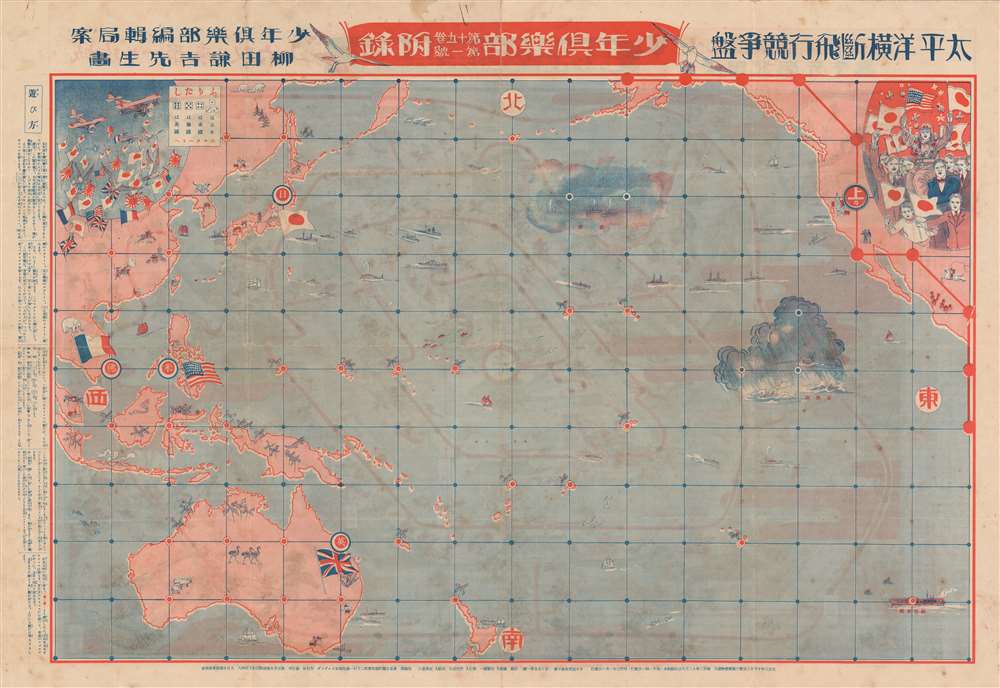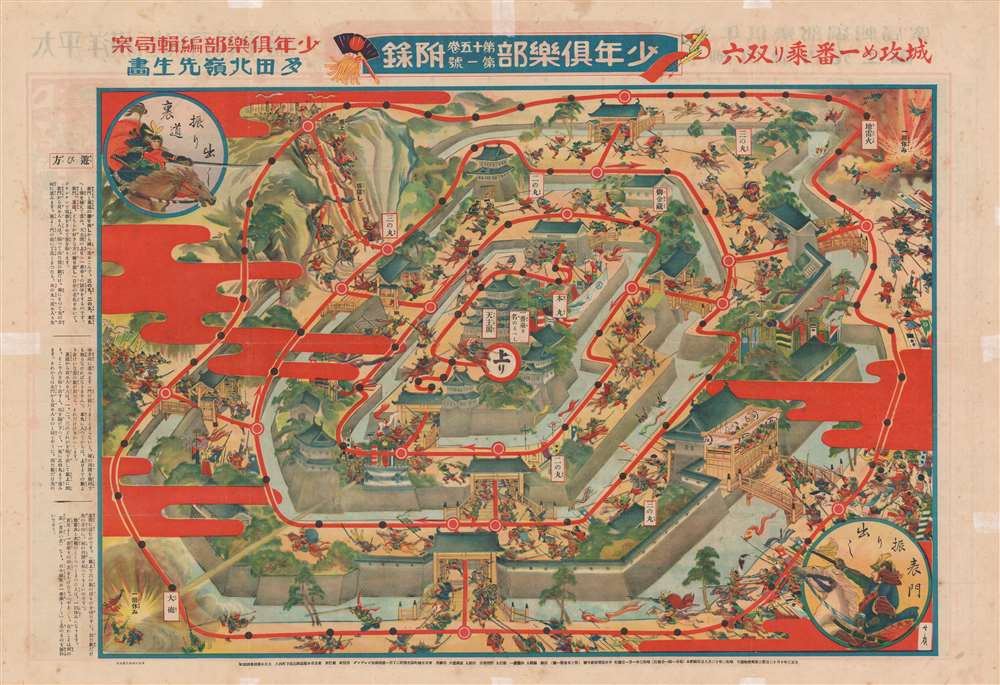
This item below is out of stock, but another example (left) is available. To view the available item, click "Details."
Details
1927 Japanese Kodansha Youth Club Sugoroku Trans-Pacific Aviation Map
$750.00
1927 Japanese Kodansha Youth Club Sugoroku Trans-Pacific Aviation Map
PacificSuguruku-kodansha-1927
Title
1927 (dated) 21 x 31 in (53.34 x 78.74 cm)
Description
Trans-Pacific Flight Sugoroku
In the late 1920s there was a global aviation race to become the first pilot to successfully cross the Pacific. Most planes at the time were small solo affairs, generally impractical for exceptionally long flight, but those daredevils who did accomplish such long non-stop flights became national heroes. In the U.S., this was Charles Lindbergh, in Japan, it was Seiji Yoshihara. When this map was issued, it was three years before Yoshihara's fateful flight, but he was already gaining renown airman. Yoshihara is here pictured in the upper right, with a victory wreath of flowers, holding aloft an American and Japanese flags. When Yoshihara finally attempted this flight, in May 1931, the effort ended in disaster, his plane forced down by mechanical problems in the Kuril Islands. He made a second attempt shortly after, but this too failed. The flight from Japan to California was finally completed later in 1931 by two American pilots, who left from Japan after Yoshihara. Today, all references to Yoshihara appear in English. We cannot find any reference to his exploits in JapaneseSugoroku
The essence of the game, generally known as simplified sugoroku, is akin to the western board game, snakes and ladders. Historically there are two variants of sugoroku, one that is similar to backgammon, and the presently offered 'snakes and ladders' variant. This version of the game appeared as early as the 13th century, and was popularized by the rise of printing technology, especially in the Edo and Meiji periods, leading to the production of high-quality visually-arresting gameboards. A standard sugoroku board has a starting point, the furi-dashi, and a winding or spiral path terminating at the agari or finish-line. The gameplay itself, not unlike 'snakes and ladders,' is a race to the finish.Publication History and Census
This map and Sugoroku board was published by Kodansha on December 8, Showa 2, or 1927, for issue on January First, Show 3, 1928. It was issued for the Volume 15, no. 1 New Year Issue of 'Japan Youth Club' a monthly periodical for Japanese teens.Cartographer
Kodansha (式会社講談社, 1909 - Present), also known as Dai Nippon Odankai Kodansha, is a Japanese publishing house founded in 1909 by Seiji Noma (野間淸治). Seiji founded Kodansha as a spin-off from the Dai-Nippon Yūbenkai (Greater Japan Oratorical Society) and produced the literary magazine Yūben as its first publication. The name Kodansha, a derivative of the defunct magazine Kōdan Club (Storytelling Club), in 1911, which it merged with the Dai-Nippon Yūbenkai. In 1925, Kodansha launched King (キング) , the first magazine to sell 1,000,000 copies in its first printing. Kōdansha published several other magazines including Women's Club (婦人倶樂部) and Boy's Club (少年倶樂部) and had become a major shaper of Japanese culture and public opinion by the 1930s, controlling 70% of the magazine market. Kōdansha suffered difficulties during the war period, due to both intense censorship and the 1938 death of both Noma Seiji and his son, Noma Hasashi (野間恒), within weeks of one another. Still, the company survived the wartime era and, after a period of difficulties during the U.S. Occupation due to Kōdansha's endorsement of militarism, benefitted from a postwar publishing revival. Although King and other magazines ceased publication in the postwar period, Kōdansha branched into other areas, including manga and music recording, and is now the largest publisher in Japan. More by this mapmaker...




